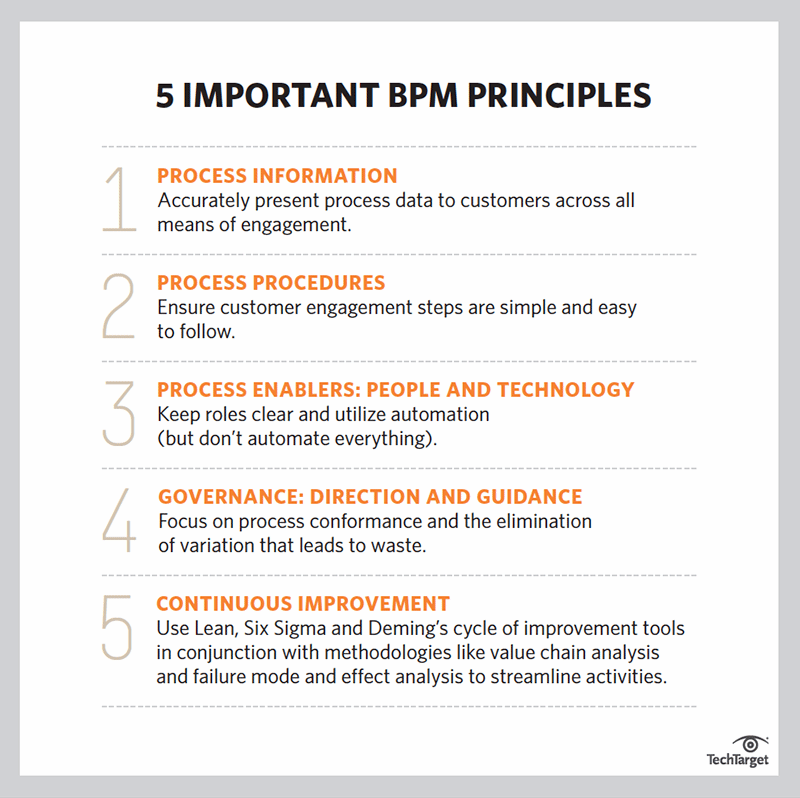Let's talk about how products and services are being transformed, how customer engagement is changing and how a culture of operational excellence -- through the use of business process management (BPM) principles -- can help you maintain the edge you need to become or remain a market leader.
Product and service transformations
Products and services have been going through a transformation from physical to virtual, delivering to consumers and customers easier access to products and services. Consider:
- Traditional cameras have been reduced to a niche market, replaced by digital cameras and smartphones. Consumers don't store photos in old shoe boxes anymore.
- Digital music files bought via iTunes and Amazon have replaced vinyl records and CDs. Since its inception, Apple iTunes has sold over 35 billion individual songs. There are no more record collections, except among a small group of avid vinyl collectors.
- Transport and delivery services are now available by a flick of the thumb. Consumers can order a ride via Uber and groceries via Peapod. And someday, they'll get goods by Amazon drone aircraft. Who needs a car?
- Communications and entertainment services have gone through massive business model changes, with pay-as-you-go services like Spotify (music), Hulu (television), Netflix and HBO Go (movies and TV series) and NYTimes.com (news). Who needs cable TV or a printed newspaper?
Customer engagement transformations
Customer engagement processes like marketing, ordering, payment and delivery are also being transformed from the physical to the virtual.
Traditional customer engagement activities have been face to face in real time, very conversational and unstructured. Now, though, technology is making transaction activities and data structured and accessible from any place or at any time.
Internet and mobile technology provide a perception of intimacy and exclusiveness. You can shop from the privacy of your bed, on the plane or at your office desk using your phone, computer or even your watch.
The largest U.S. demographic group -- the millennials -- has grown up with and is at ease with these technologies. They expect it to make their life easier. And they expect hassle-free, zero-defect and instantaneous interactions with suppliers of goods and services. A 2012 Google-sponsored poll of 1,088 U.S. adult smartphone and Internet users found that 67% of respondents would prefer to purchase from a company that is mobile-friendly.
Winning through a culture of operational excellence
BPM principles are critical for companies to become market leaders that customers look to deliver products and services at the lowest cost and through easy processes. This type of firm strives for internal operational excellence. Each business function lowers cost by minimizing transactional friction and increasing product/service turnaround.
Using five BPM principles, let's highlight how an operational excellence culture satisfies the needs of technology-wise consumers.
Process information. Process data -- representing pricing, delivery and inventory info -- should be presented accurately to the customer consistently across the various means of engagement: Web, mobile or physical store. You don't want to drive to a Best Buy store to find out the gadget you want isn't actually in stock.
Process procedures. Keeping customer engagement processes simple and straightforward is important. The flow of steps should be clear and simple to follow. Eliminate friction of unnecessary data collection when the customer is interacting with your company. Track key business intelligence data in parallel; don't interrupt the customer workflow. Then prioritize the follow-on activities that progress customers' wishes first before any other business processing.
Process enablers: People and technology. Roles and the associated duties should be clear and simple. The skills needed should not require high levels of expertise, but good interpersonal skills for customer service are always table stakes in any business.
Automation and technology should be leveraged to lower cost. Use automation to enable a smooth and effortless experience to compare, order and set up delivery of products.
But don't automate everything. Even with an operational excellence approach, a customer's demand for intimacy will necessitate the right mix of automation with manual interventions. Identify the key engagement touch points where customers may need a human touch if they run into trouble; rescuing customers having a problem will cement a longer-lasting relationship.
Governance: Direction and guidance. Governance should focus on process conformance and the elimination of variation that leads to waste. Governance should also be the driver of the organizational culture by defining the behaviors, rewards and disincentives for adherence to process execution.
Continuous improvement. This is the most important discipline. Lean and Six Sigma tools used in conjunction with Deming's cycle of improvement should be applied in the improvement of a business process. Use methodologies like value chain analysis and failure mode and effect analysis to streamline activities, refocus process objectives and eliminate failures to ensure value to the customer is delivered at the lowest cost.

Focus on the customer
Finally, you need to discern the voice of the customer. Reach out, listen and reflect on customer feedback because it helps identify the most important improvement opportunities you will find.
Technology is not only providing new ways to deliver or even create new products and services but as a new means to integrate the customer engagement into those products and services. Consider the future where you can press a button in your cupboard to order your cereal or washing detergent before it runs out, and get it delivered automatically. Wait -- the future is here already.











0 comments:
Post a Comment